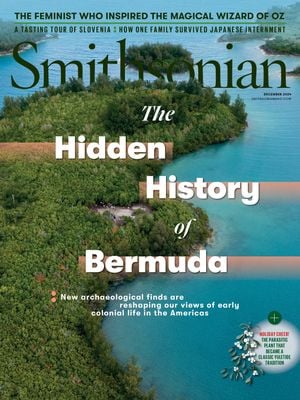Readers Respond to the November 2024 Issue
Your feedback on a multitalented fruit detective, a Jewish actor’s journey and a long-overlooked Native American massacre
Hiding in Plain Sight
“The Role of His Life” (November 2024) gave me a deeper understanding of how the anti-Jewish movement in Germany started before World War II, and I was blown away by Leo Reuss’ passion for acting. I can’t even begin to imagine what he went through. It saddened me to see how the masses loved his performances when they did not realize that he was Jewish, and once they found out, they turned on him completely. The lengths that people will go to in order to preserve their hate. It was an incredible story. —Kevin Molohon | White Bear Lake, Minnesota
Forgotten Fruit
I thoroughly enjoyed Mark Schapiro’s article (“The Fruit Detective,” November 2024), and I want more! Could the writer and the scientist do a book “collab” with many, many pictures of Italian Renaissance and medieval paintings? I am an artist and find the subject fascinating. After reading the article with all the “detectable,” delicious paintings, I feel quite hungry somehow for fruit, so I am going fruit shopping. —Tara Skille | Lake Delton, Wisconsin
I found the article “The Fruit Detective” fascinating. It highlights the biodiversity of ancient fruits, which possess a richer genetic code that may well enhance their resilience to climate change. What also springs to mind are the health benefits of these natural foods for vitamins and minerals that may be missing from contemporary fruit varieties. Isabella Dalla Ragione’s efforts and achievements are commendable, and I believe there is still much to learn that could greatly benefit humanity. —Nancy Johnson | Boca Raton, Florida
Reconciling the Past
Your November 2024 cover story, “The Living Memory of Blue Water,” was very moving. I’m part American Indian, and I have always felt that the Indians’ side of the story should be in all American history books. The whitewash that the government has done is so detrimental to the people who were here long before the white man. The Indians’ story needs to be told in books, on television and on social media so that all Americans know what really happened. —Dee Bivens | Arlington, Virginia
I understand the need for careful consideration of the artifacts. But more important, in my opinion, I feel for the Lakota Native Americans seeking to establish a lasting memorial to what happened at Blue Water Creek. Most critically, I believe the return of the items from the Smithsonian to be essential. Above all reasons is the fact that they belong to the people from whose ancestors they were taken—after they were massacred. I applaud the Smithsonian’s upgraded policy to return them to appropriate groups. Having them in a memorial site honoring the people massacred is the right decision to make. They belong in Native American control, displayed for all to see and reflect upon. —John Bennett | Midlothian, Virginia
